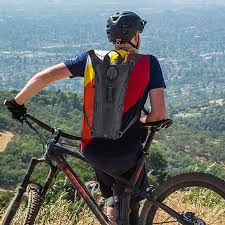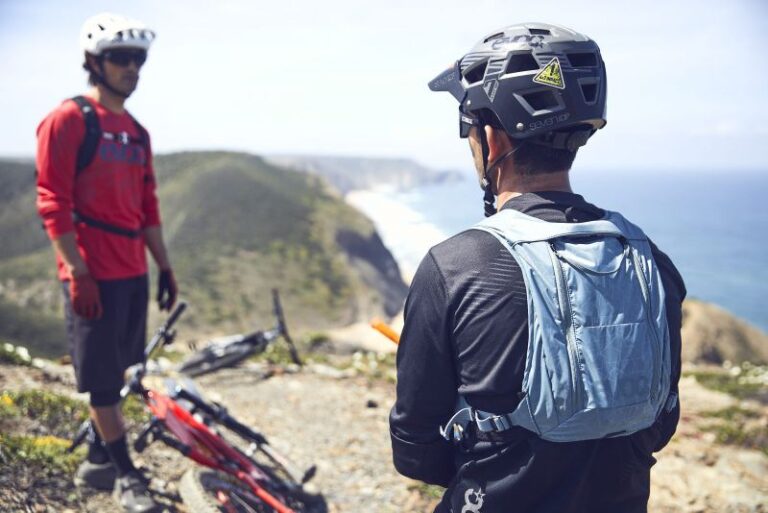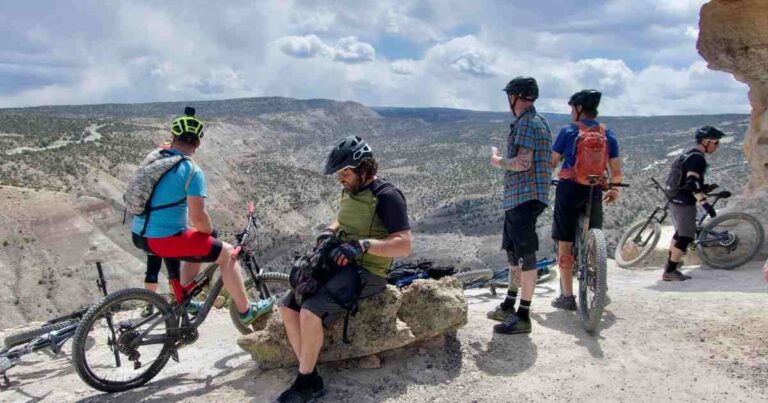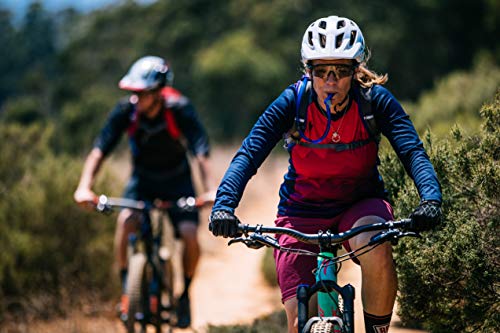Staying Hydrated on the Move: Essential Tips in Using Hydration Packs for Long-Distance Rides
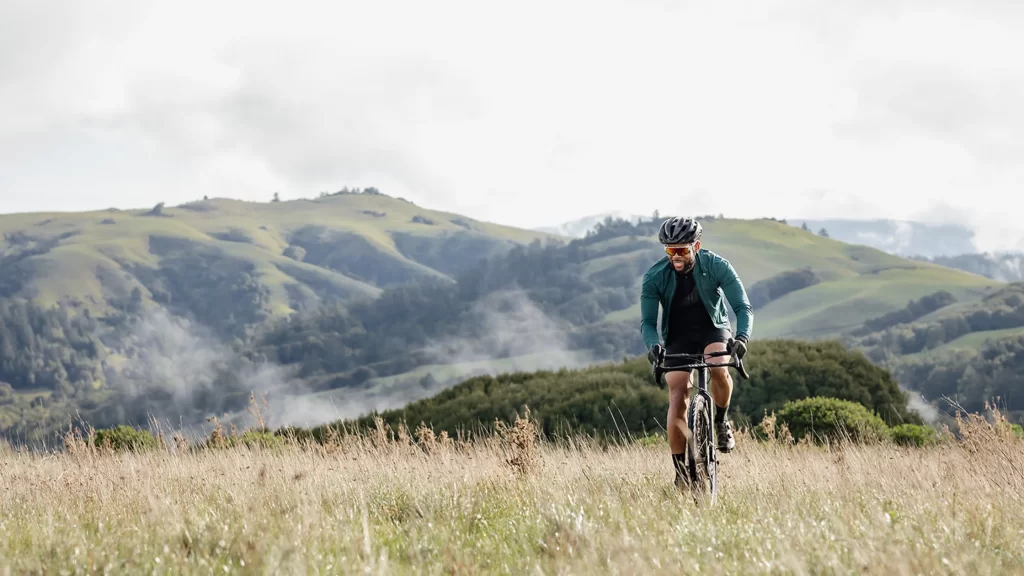
Key Point Summary of Using Hydration Packs for Long-Distance Rides:
- Choosing the Right Hydration Pack: Key factors to consider for long-distance hydration packs.
- Hydration Strategies for Endurance Cycling: Best practices for staying hydrated during long rides.
- Comfort and Convenience Features: Importance of comfort and ease of use in hydration packs for extended rides.
As a seasoned masters cyclist with a rich background in various biking disciplines, including mountain biking, gravel biking, and cyclocross, I’ve learned the importance of proper hydration, especially for long-distance rides. Through years of experience, I’ve gathered insights on using hydration packs effectively for endurance cycling, which I believe will be beneficial for cyclists at beginner to mid-level.
Choosing the Right Hydration Pack
When preparing for long-distance rides, selecting the right hydration pack is crucial. Here are some factors to consider:
- Capacity: For extended rides, a pack with a larger water reservoir (typically 2 to 3 liters) is essential. It reduces the need for frequent refills, allowing you to maintain your rhythm and pace.
- Fit and Comfort: A hydration pack should fit snugly yet comfortably. Look for adjustable straps and a design that aligns with your body shape. Remember, you’ll be wearing this pack for several hours, so comfort is key.
- Storage: Adequate storage for essential tools, snacks, and perhaps an extra layer of clothing is important. But be wary of overpacking, as excess weight can lead to fatigue.
Hydration Strategies for Endurance Cycling
Effective hydration is more than just drinking water. It’s about maintaining a balance:
- Pre-Ride Hydration: Begin hydrating well before your ride. I’ve found that starting a long ride well-hydrated can make a significant difference in overall performance.
- During the Ride: Sip water regularly. Don’t wait until you feel thirsty, as thirst is often a late sign of dehydration. I usually take a few sips every 15-20 minutes to maintain optimal hydration levels.
- Electrolyte Balance: For rides longer than an hour, consider a hydration mix that replenishes electrolytes. This helps prevent cramps and maintains energy levels.
Comfort and Convenience Features
- Ease of Access: Look for packs with easily accessible pockets and an intuitive design. Being able to reach your essentials without stopping is a huge plus.
- Ventilation: A pack that allows for good airflow between the pack and your back can prevent excessive sweating and discomfort. This is particularly important in warmer weather.
- Hydration Hose Management: A pack with a well-designed hose management system ensures you can drink effortlessly while riding. A magnetic clip or a secured hose port can make a big difference.
Detailed Considerations for Hydration Pack Selection
- Hydration Bladder Insulation: For extreme weather conditions, consider hydration packs with insulated bladders. This feature keeps water cool in hot conditions and prevents freezing in cold weather, ensuring the water is always ready to drink.
- Weight Distribution: A well-designed pack will distribute weight evenly across your back. This is crucial for long rides, as uneven weight can lead to muscle strain and discomfort. Look for packs with lower-placed reservoirs to keep the center of gravity close to your waist, aiding in bike handling.
- Reflective Elements for Safety: If your long rides extend into dusk or dawn hours, reflective elements on a hydration pack can enhance visibility. This safety feature is often overlooked but can be vital during low-light conditions.
Advanced Hydration Pack Features
- Quick-Release Valves: These allow for easy refilling without the need to remove the entire bladder from the pack, saving time and hassle during rest stops.
- Dedicated Tool Compartments: Some hydration packs offer compartments specifically for tools and repair kits, separate from the main storage area. This organization can be a game-changer in keeping things accessible and efficient.
- Adjustable Sternum and Waist Straps: For stability, especially on uneven terrain, adjustable straps can help secure the pack close to your body, minimizing movement and potential chafing.
Hydration Practices for Endurance Rides
- Start Hydrating Early: I always advise beginning your hydration process a day before the ride. This ensures that you start off well-hydrated, which is crucial for endurance events.
- Hydration Frequency: Regular, small sips are better than infrequent, large gulps. This consistent approach helps maintain hydration levels without causing discomfort or bloating.
FAQ
Do road cyclists use hydration packs?
Some road cyclists use hydration packs, particularly for longer rides or when access to water is limited. However, they are less common in road cycling compared to mountain biking, as road cyclists often prefer water bottles for their lower weight and aerodynamic advantages. Here’s a useful YouTube video from Clint Gibbs on why use a Hydration Pack for cycling.
What distance do you need a hydration pack?
There’s no specific distance at which a hydration pack is necessary; it depends on individual needs, weather conditions, and the availability of water on the route. Generally, for activities longer than 1-2 hours, especially in warm or remote areas, a hydration pack can be beneficial.
What size hydration pack for marathon?
For a marathon, a hydration pack with a capacity of 1.5 to 2 liters is usually sufficient. This size balances the need for adequate hydration with the desire to keep the pack light and non-intrusive during the run.
Here are five highly recommended hydration packs ideal for long rides:
1. Hydrapak Expedition 8L
- Capacity: 3 liters
- Best For: Designed for rugged conditions, it’s perfect for cyclists who embark on multi-day or extreme endurance rides.
2. Salomon ADV Skin 12 Set
- Capacity: Up to 2 liters
- Best For: This vest-style pack is excellent for ultra-distance cyclists who prioritize a snug fit and lightweight design.
3. Nathan VaporAir 7L 2.0 Hydration Vest
- Capacity: 2 liters
- Best For: Known for its vest-like fit and breathable materials, it’s ideal for road cyclists and those who prefer a more minimalistic design.
4. Ultimate Direction Mountain Vesta 4.0
- Capacity: 2 liters
- Best For: With its woman-specific design, it’s a great choice for female cyclists seeking a comfortable fit for long rides.
5. Gregory Mountain Products Amasa 10L Daypack
- Capacity: 3 liters
- Best For: Offers a balance of hydration capacity and storage, designed for mountain bikers and trail riders who need extra space for gear.
These packs are alternatives to the more commonly known models and are selected for their unique features, comfort, and suitability for long-distance cycling.
Final Thoughts
In endurance cycling, a well-chosen hydration pack is not just a convenience, it’s a necessity. It allows you to carry sufficient water and essentials, all while ensuring you stay hydrated and energized throughout your ride.
Choosing and using a hydration pack for long-distance cycling involves a blend of personal preference and practical functionality. By considering factors like insulation, weight distribution, safety features, and hydration practices, you can find a pack that not only meets your needs but also enhances your overall riding experience.
As you prepare for your next long-distance adventure, give thoughtful consideration to your hydration strategy and pack choice – it could make all the difference in your overall experience and performance.
John
